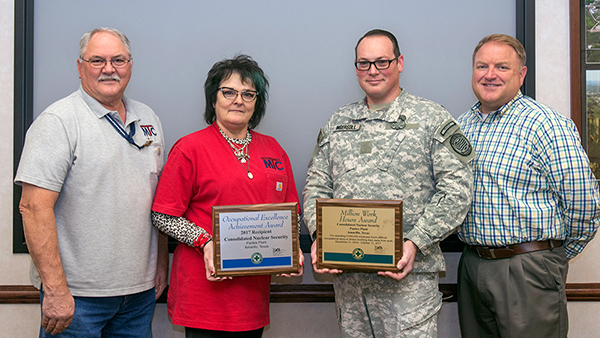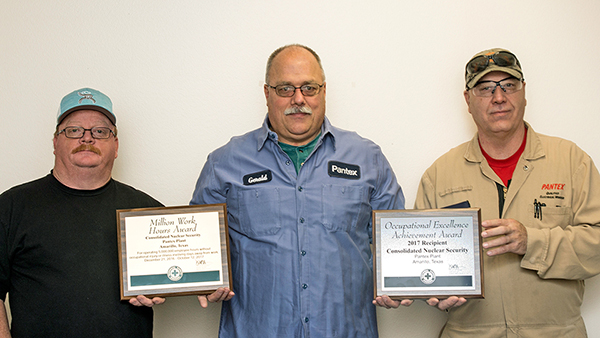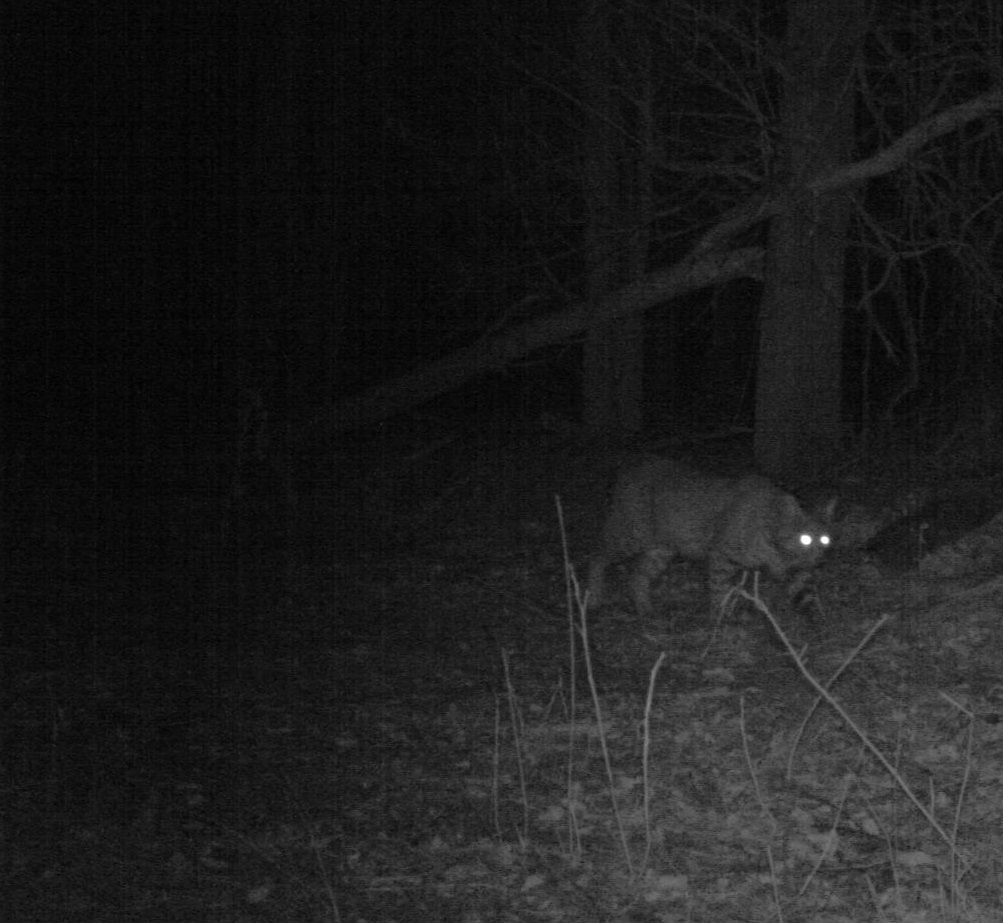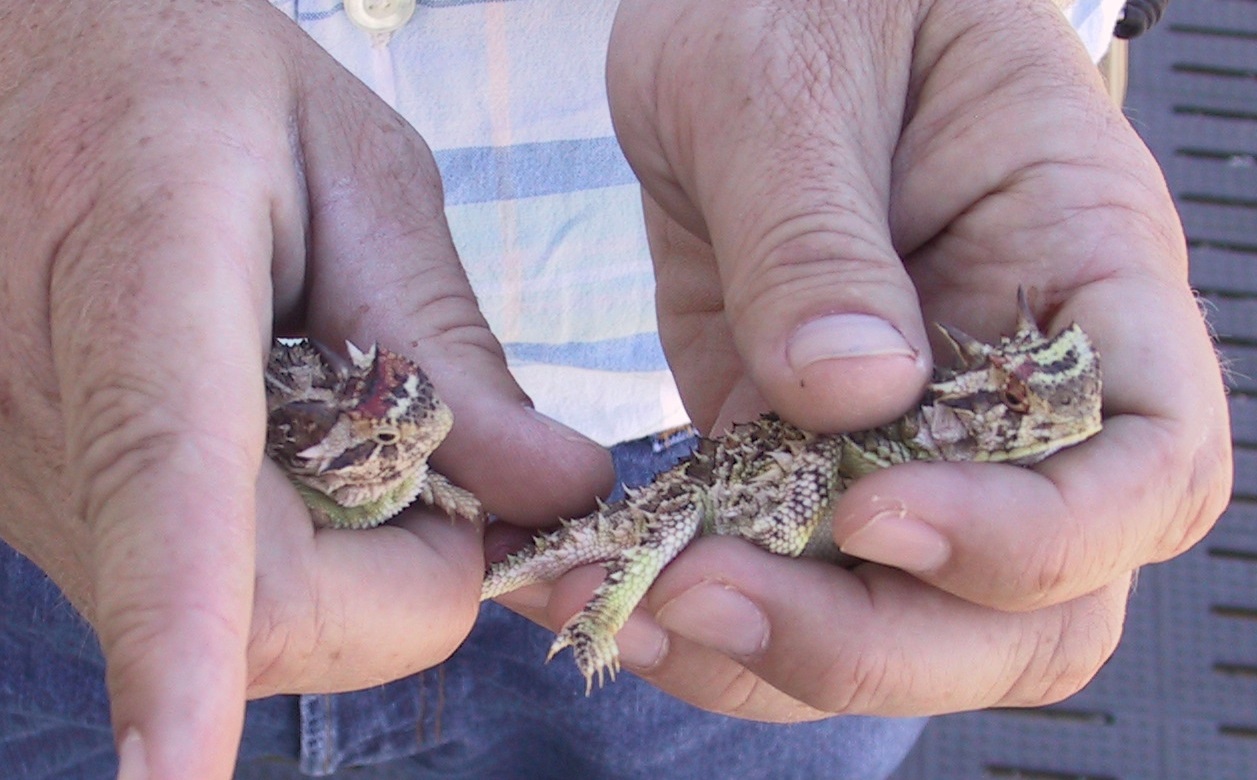Pantex Blog
Pantex surpasses 5 million hours without Lost Time injury
Pantex recently reached a major milestone when they passed 5 million hours without a Lost Time injury. From December 20, 2016 to December 2, 2017, Pantexans worked 5,979,716 hours without a Lost Time injury.
Jimmy Rogers, Pantex Safety and Industrial Hygiene manager, said in November2017 Pantex received two recognitions from the National Safety Council. The first was the Million Work Hours Award - noting the more than 5 million hours worked without a Lost Time injury and the second, the Occupational Excellence Achievement Award – awarded to companies that have Lost Time injury cases equal to or less than 50 percent of their industry classification code.
“I am very proud of Pantex,” said Rogers. “This is evidence that we are heading in the right direction. With keeping safety as our first imperative and our dedication to each other, we can continue to improve and strive for our goal of an injury-free workplace.”
Occupational Safety and Health Administration and the Department of Energy records worker injuries in four categories, from the least serious to most serious:
- First aid: an injury such as minor cuts, sprains, or strains
- Recordable: an injury that require medical treatment such as prescriptions, stitches, or physical therapy
- Restricted Work: an injury that impacts regular work duties
- Lost Time: an injury that requires the employee be off work at least one shift
The last time Pantex achieved this many hours was in 2012, when the site went 14 months and more than 8 million hours without a Lost Time injury.

From left: Monte McAnear, Robin Harris, Anthony Ingersoll, and Corey Strickland showcase Pantex’s two recent safety recognitions.

Congratulations to Pantex on this significant accomplishment; shown are Jackie Mercer (left), Gerald Johnston, and Donny Perry.
Wild Pantex – Nighttime Magic
Article by Jim Ray, Pantex Wildlife Biologist/Scientist
It’s December and time again to conduct our annual spotlight surveys for wildlife. A 24-mile route, established almost 20 years ago, is driven on three separate nights beginning just after dark. As we proceed along the route, our powerful spotlights illuminate the habitat on each side of the vehicle allowing us to possibly detect several kinds of animals and numbers of animals not typically seen during our normal workday. This makes these spotlight surveys an integral part of monitoring wildlife species at Pantex.
Fall is the time of year when the young of many species have dispersed to set up their own territories, which increases the chances of observing some of our rarer species. Also, it is late enough in the year that our vegetation has died back, making visibility better. The value of these surveys ranges from simply having the opportunity to monitor nocturnal animals for presence or absence to monitoring long-term trends of numbers or densities of these animals.
We spend much time and effort trying to document and monitor our natural resources, and we utilize that information for protecting them, making land management decisions, judging the effectiveness of our management, and answering questions asked by our management, our customer (the U. S. Department of Energy/National Nuclear Security Administration), external entities, and the public. Such data is reported annually in various Pantex documents.
On most nights, a spotlight survey at Pantex will yield black-tailed jackrabbits, cottontails, mule deer, striped skunks, and coyotes. Bobcats have been frequently sighted during the last decade. A little less often, a night’s work could include documenting badgers, gray foxes, raccoons, white-tailed deer and, unfortunately, feral cats. In addition to mammals, a spotlight survey might be the only opportunity for us to document short-eared owls, a wintertime visitor to the region.
Coming from a background of working for the Texas Parks and Wildlife Department, our spotlight surveys are conducted in a manner that data is comparable with Parks and Wildlife’s, as well as among our own data between years.
Obviously, conducting these surveys is more about just consistency in methodology and being able to see eyes. It is also about seeing eye-shine at great distances, through vegetation, and seeing that of species with small eyes, those that don’t shine as bright as others, or even those that don’t shine at all. On top of that, we have to distinguish between mule deer and white-tailed deer, red foxes and grey foxes, striped skunks and badgers, bobcats and coyotes….you get the picture. It often takes time, patience, and the aid of binoculars to make those determinations and sometimes to even get a second look at the eye-shine. With spotlight surveys, the angle and the focused beam of the spotlight are everything in being able to see the eye-shine and subsequently making a determination of the species of animal.
A typical spotlight survey will take us two to three hours to conduct, depending on how many stops that we have to use binoculars and identify eyes that are a considerable distance from the vehicle. Except for the cold, it is usually an enjoyable time and an opportunity to see a little nighttime magic and document more nocturnal species in a couple of hours than we can normally see over the course of a month or even a few years.
During my time with the Texas Parks and Wildlife Department, I had the opportunity to participate in spotlight surveys in Palo Duro Canyon, the Canadian River bottom, breaks of the Caprock Escarpment, and in the Rolling Plains. Whether in those habitats or on the flat plains of Pantex, it sure is a different world out there at night. Using the lit-up beam of a spotlight, it’s another view of our Wild Pantex, one that most will never get to see. I look forward to them every year for that very reason.
Please feel free to share this link with others that enjoy wildlife or that appreciate entities that strive to contribute to wildlife conservation.

Photo: A bobcat prowling during the nighttime hours on the U. S. Department of Energy/National Nuclear Security Administration Pantex Plant.
Pantex Emergency Management joins NISC
Pantex Emergency Management was recently granted membership in the National Information Sharing Consortium, an independent consortium of civic, federal, and private leaders in public safety, emergency preparedness and response, and information sharing technologies.
NISC was launched in 2012 to improve the state of public safety and emergency management information sharing and interoperability. The organization achieves this goal by sharing, connecting, innovating, and leading. With its NISC membership, Pantex Emergency Management has new access to tools, templates, and lessons learned that will provide value to the site’s emergency response operations.
Pantex honors North Amarillo Auto Parts
Consolidated Nuclear Security, LLC honored North Amarillo Auto Parts as Small Business of the Year at this year’s Amarillo Small Business Awards. The ceremony was a collaborative effort among CNS, West Texas A&M University, the City of Amarillo, and the WTAMU Small Business Development Center to recognize small businesses in the Texas Panhandle area.
With a fleet that includes fire trucks and specialized security vehicles, many of Pantex’s requests fall outside normal auto parts requests. Paul Bently, Pantex crafts supervisor, said "Matt (Newkirk) at North Amarillo Auto Parts spends countless hours on the phone and on the internet searching for hard-to-find parts that we need every day in the shop."
CNS has set a goal to award 60 percent of contracts to small businesses. “CNS would not be able to achieve its mission without the support of small businesses; they truly are the heart of our economy,” said Ryan Johnston, the CNS Small Business Program Manager.
Watch this video about North Amarillo Auto Parts and its relationship with Pantex.
If the problem persists contact your website administrator. Please check logs for further debugging.
Wild Pantex – Panhandle Texas Horned Lizards: Small, Yet Resourceful
Article by Jim Ray, Pantex Wildlife Biologist/Scientist
Most of us who were raised in Texas and the adjoining states in the early and middle portions of the 20th Century have fond memories of the Texas horned lizard, which we called the horny toad. This flat and well-armored lizard was quite abundant in my hometown of Dalhart, Texas. As a child, I spent many an hour searching for them, studying them a few minutes, and then allowing them to continue on their way. Now, less abundant or even absent from much of its original range, this species of horned lizard is protected in Texas and is the subject of many research questions which will hopefully comprise the pieces to the puzzle as to why this species has declined in many areas.
The U.S. Department of Energy/National Nuclear Security Administration Pantex Plant where I work happens to still have a good population of Texas horned lizards. In fact, I find they are still abundant in grassland areas of this part of the state. As the Pantex wildlife biologist (and with proper permits in hand) I have had a great opportunity over the last 18 years to continue to play with these lizards. Better yet, one of the first two research projects that we have initiated here at Pantex was one working on Texas horned lizards and other herpetofauna (reptiles and amphibians) in collaboration with Dr. Richard Kazmaier of West Texas A&M University. We studied this reptile on site for nearly a decade, even using tiny radio-transmitter backpacks for tracking and determining its habitat needs here in the shortgrass prairies of the Southern Great Plains.
One very interesting aspect of our research was a contradiction that we found relative to previously known research on the lizard’s diet. Diet analyses of a large sample of Texas horned lizards at Pantex and another research site studied by West Texas A&M indicated that Panhandle lizards are more generalists in their diet than horned lizards from other areas. These lizards are widely known to primarily consume several species of the harvester ant, most notably the red harvester ant (Pogonomyrmex barbatus). Although various species of ants still comprise the majority of their diet, Panhandle horned lizards tend to consume more of the much smaller species of ants, as well as other invertebrate prey.
The fact that these “northern” horned lizards are smaller than those in the rest of the state likely plays a role in this difference of diet. The energetics associated with the smaller body size allows them to subsist on smaller invertebrate prey. Or is it the opposite? Does the small body size come from the lower dependence on the large harvester-ant species? Although harvester-ant colonies may still be an important component of their habitat across their range, being more of a generalist allows the lizards in the Texas Panhandle to survive should harvester-ant colonies be less abundant than in other areas or between years.
Please feel free to share this link with others who enjoy wildlife or that appreciate entities that strive to contribute to wildlife conservation.

Photo: Both of these Texas horned lizards exhibited blood-squirting behavior (from the eyes as a defense strategy) upon capture as part of research on the U.S. Department of Energy/National Nuclear Security Administration Pantex Plant. Pantex and West Texas A&M staff possessed the required permits to capture and handle these lizards for research purposes.
